GR2 Four Sided Further Information...
Applying the Four Sided Rule
Often the easiest way to start a model is to identify the easy four-sided regions and build them first.
Then, for the more difficult areas you need to work out what four-sided surface patch can be trimmed to create the shape you need.
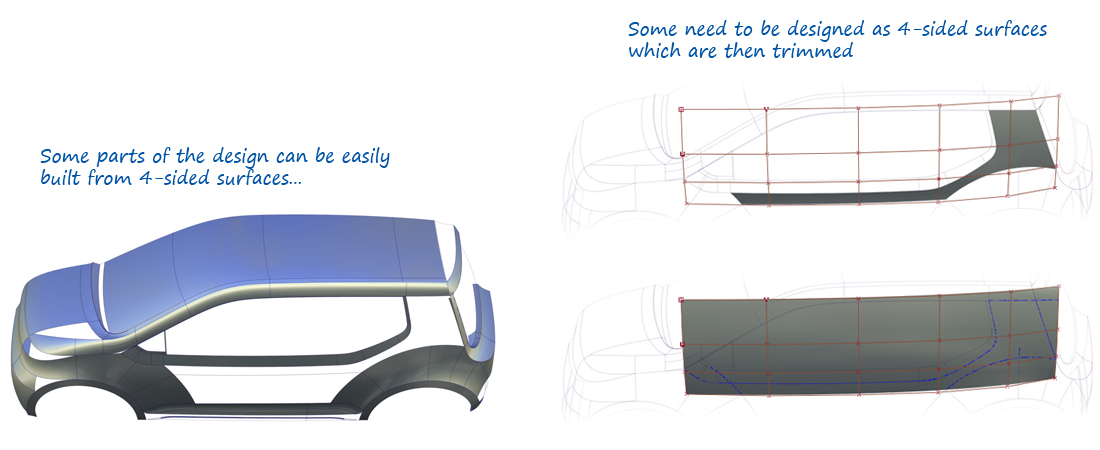
N-sided Regions
If a region isn't obviously four-sided, sometimes you can re-think a patch layout to allow for a 4-sided patch. Try to create a patch layout that allows the CV layout to flow naturally around the shapes you want. (If this isn't possible, it's usually better to use trimming instead - see below.)
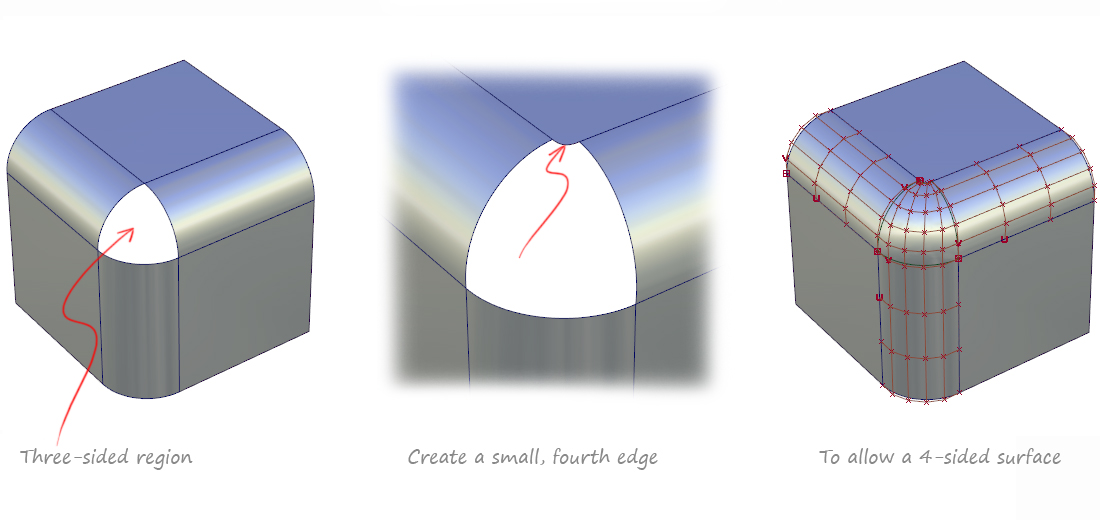
Breaking the Rule 1
The N-sided surface creates a surface across any number of boundaries. It does this by building a 4-sided surface and then trimming it to shape.
The quality of the surface is typically poor, but it can be used in concept design to quickly close a gap.
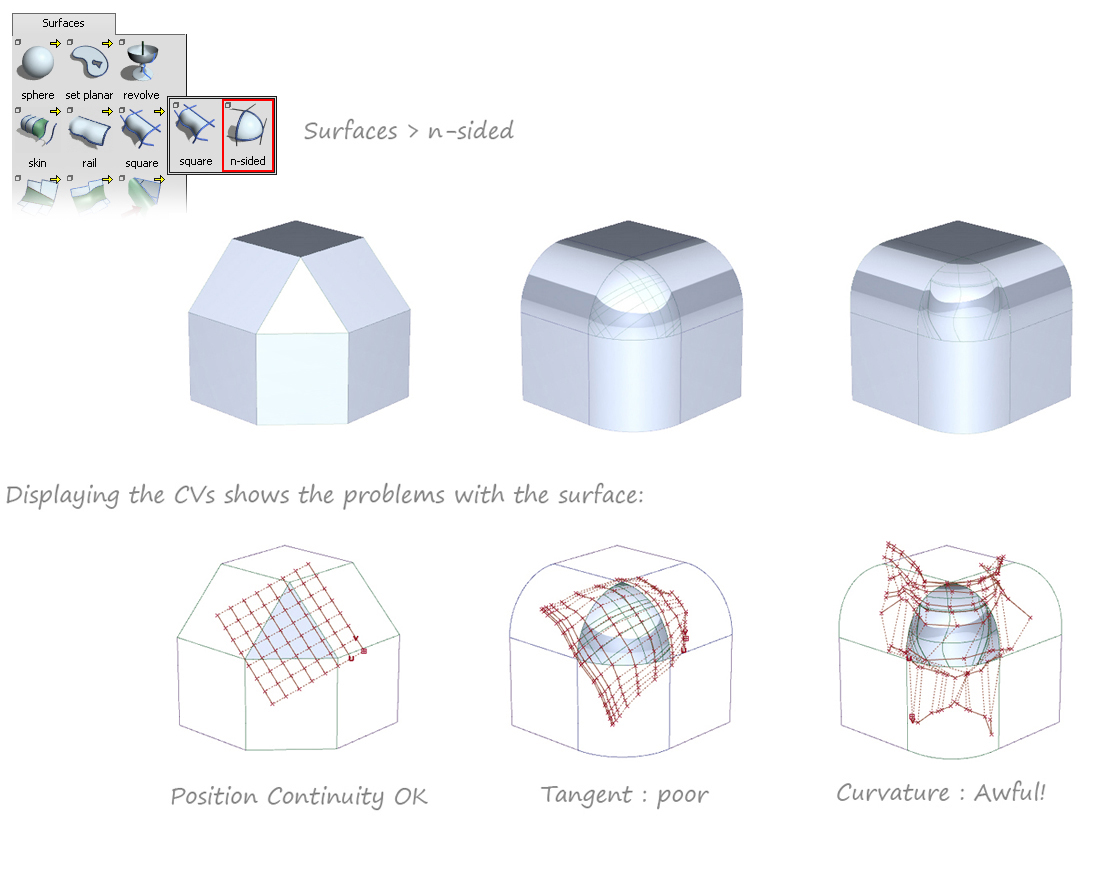
Breaking the Rule 2
The rule can be broken by creating 3 boundaries that touch, but this will create a 'degenerate point', which will give very poor highlights and cause problems with downstream modelling. Not recommended!
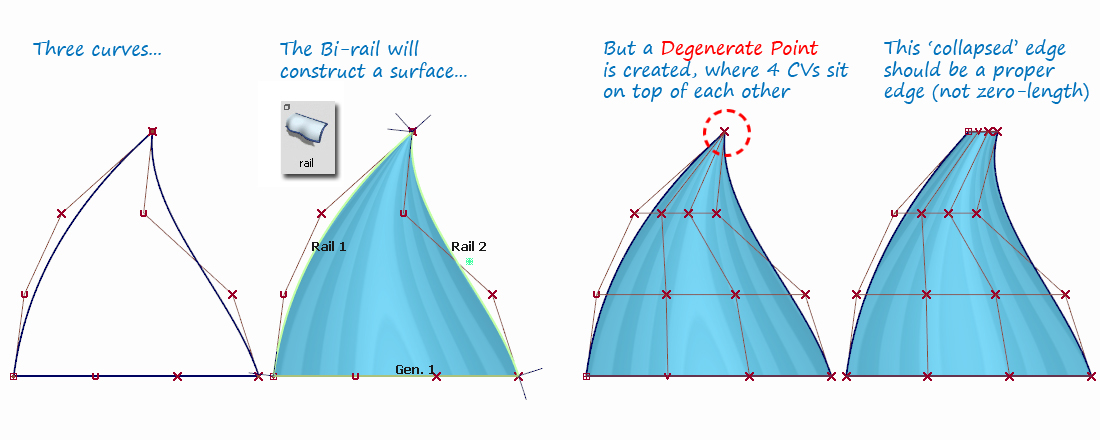
Note: Degenerate points appear in spheres and the caps of cylinder primitives, and can also be created with the Revolve tool. This will often be acceptable, but a common technique is to trim out the degenerate point and replace the area with a square surface.
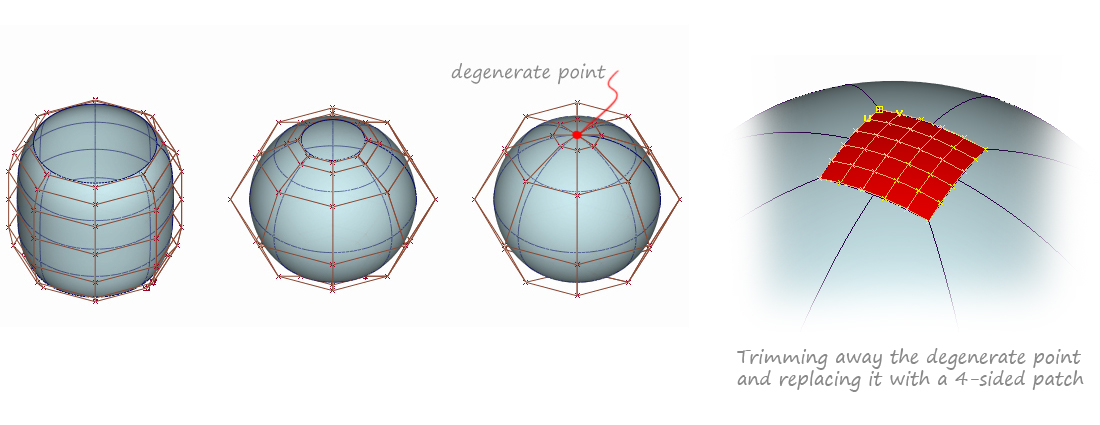
Breaking the Rule 3
The rule can also be broken by having two of the boundaries tangent to each other. Again, this will give very poor highlights and cause problems with downstream modelling. Not recommended!
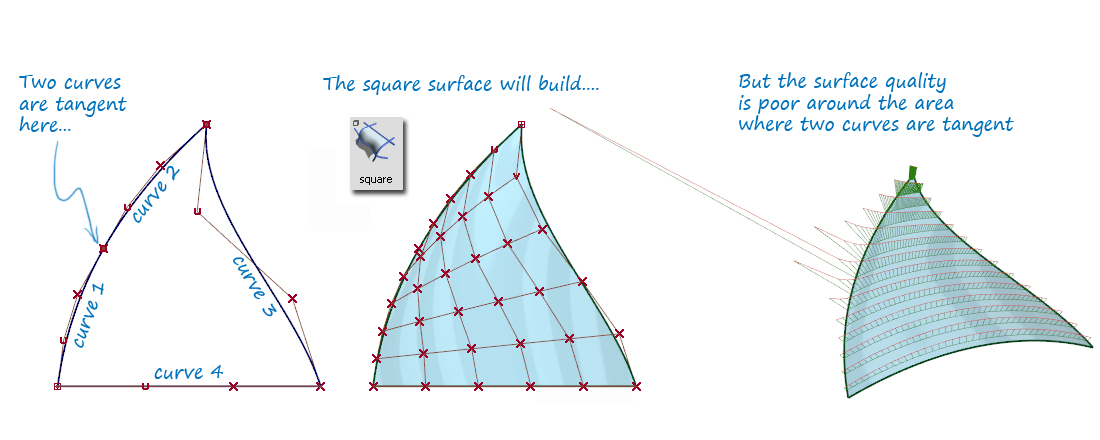
Note : You will always get better results by trimming a four-sided surface to the required shape:
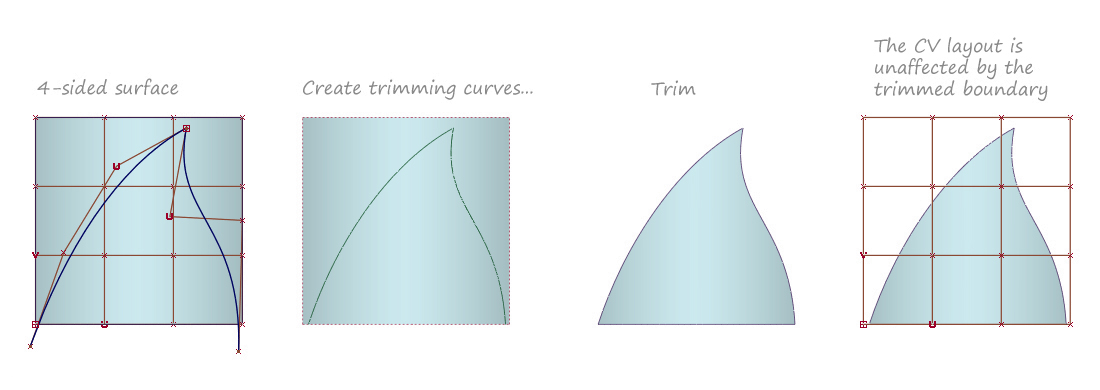
Variations on the Four-Sided rule
If a four sided surface is wrapped around so that two of the sides touch, for example a cylinder, the surface appears to have only two open edges at the top and bottom.
The cylinder can be open or periodic - see the Theory Builder Circles and Revolves for more information.
